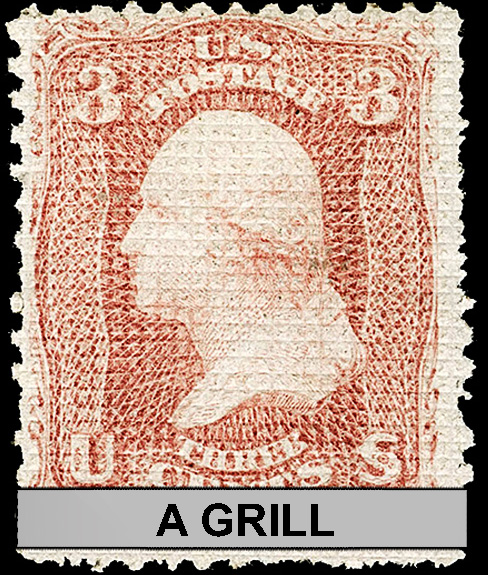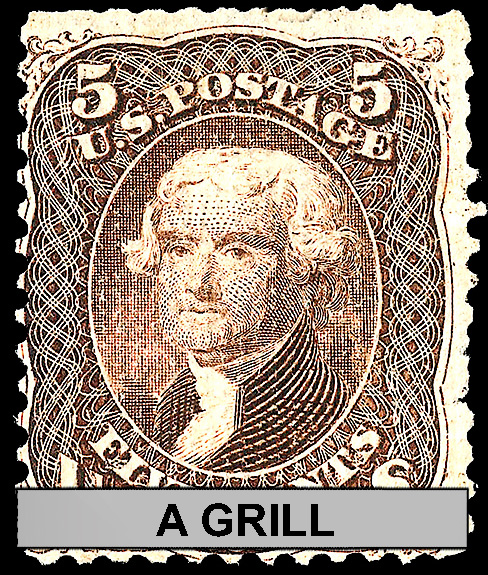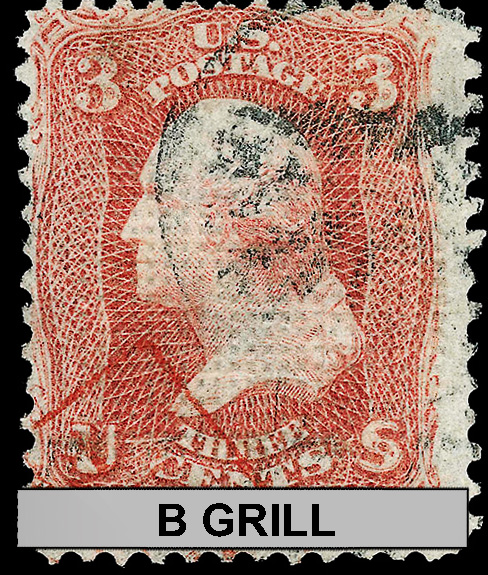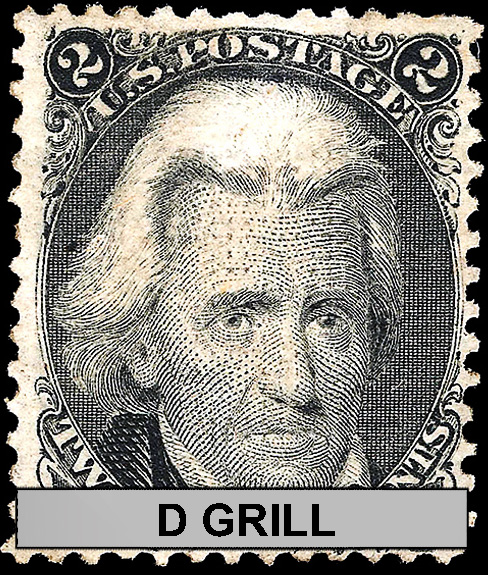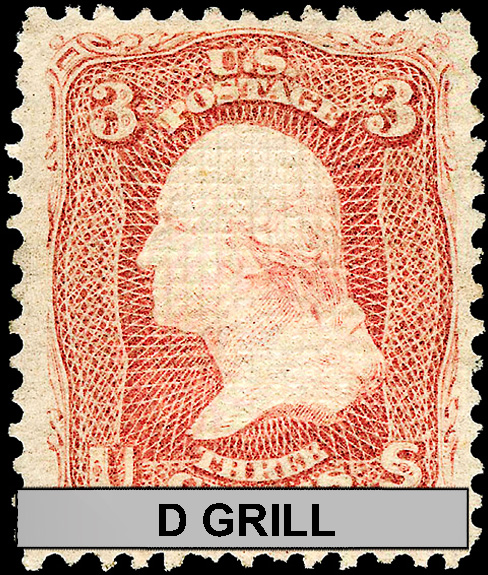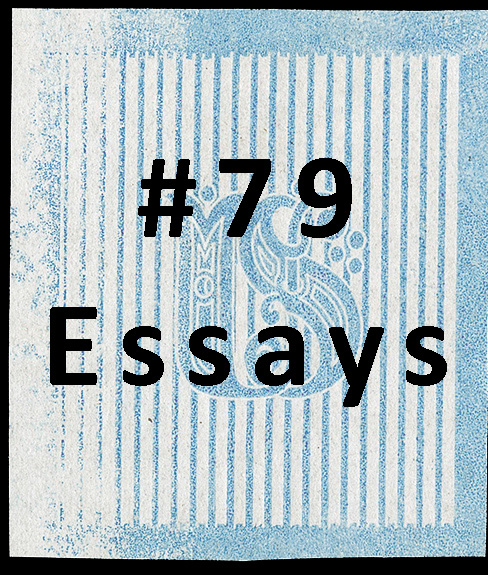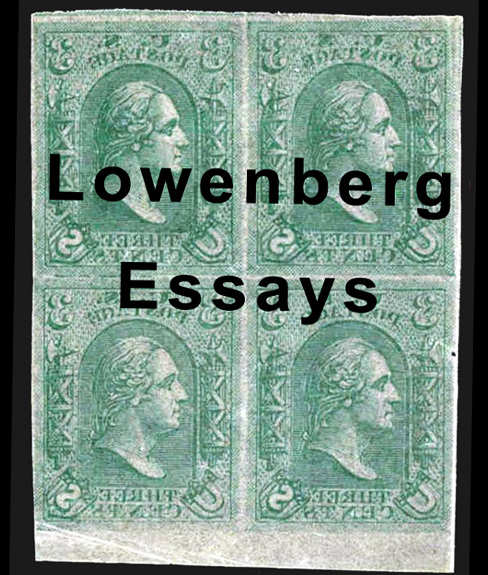The Lowenberg Essays
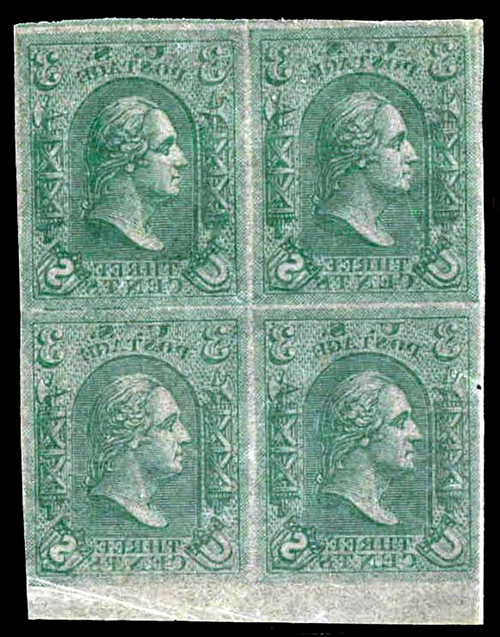
See below for the essays
Henry Lowenberg
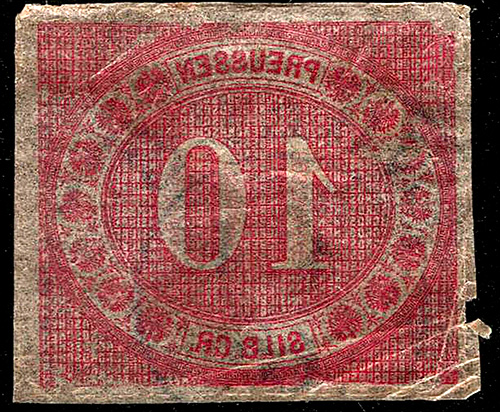
The 10sg of Lowenbergs home country Prussia, printed on onionskin paper using Lowenberg's first patent
Henry Lowenberg's attempts to create a security stamp involved a series of patents using the Decalcomania process. He used both gold beaters paper and onionskin paper. The National Bank Note Company took interest in his patent and produced a large variety of essays using the process.
Soaking the stamp would either dissolve the stamp or the ink would be washed away, thereby making the reuse of the stamp impossible. Gold beaters paper was more effective than onionskin paper at achieving this purpose.
The design was printed on the reverse of the paper and the adhesive applied over it.
Although this process was cheap it had its problems. Perforating the stamps or separating the stamps proved difficult. The stamp designs were easily creased,
In the end the National Bank Note company adopted the grilling process. The whole exercise was a boondoggle as it was later proved the extra cost of grilling stamps far outweighed the amount of stamps that were reused prior to its adoption.
The Decalcomania Process
The decalcomania process is a transfer technique, developed in the 18th century, in which ink, paint, or another medium is spread onto a surface and, while still wet, covered with material such as paper, glass, or aluminum foil, which, when removed, transfers a pattern that may be further embellished upon. It was invented by Spanish Surrealist Óscar Domínguez.
The Tissue Paper Stamp

There is only one exception to the decalcomania process employed by Henry Lowenberg, that is the use of tissue paper. The US Treasury Dept. was interested in his essays and included in his samples to them was this unusual stamp. The frame is printed on india paper, but the centre is tissue paper applied to the reverse. The reverse of the stamp then has adhesive applied to it. The idea being that once the stamp was applied to the envelope any attempt to soak the stamp off the envelope would result in the destruction of the tissue paper. One would image in the tissue paper could be easily replaced. One can only imagine what a stamp hinge would do to a mint copy!
1867 3¢ essays
Rather crude, and to the collector, affordable essays were printed on onionskin paper, with a few essays printed on gold beaters paper by the National Bank Note Co. There are 27 different colors on onionskin paper. The ink flakes off and the fragile paper creases easily.
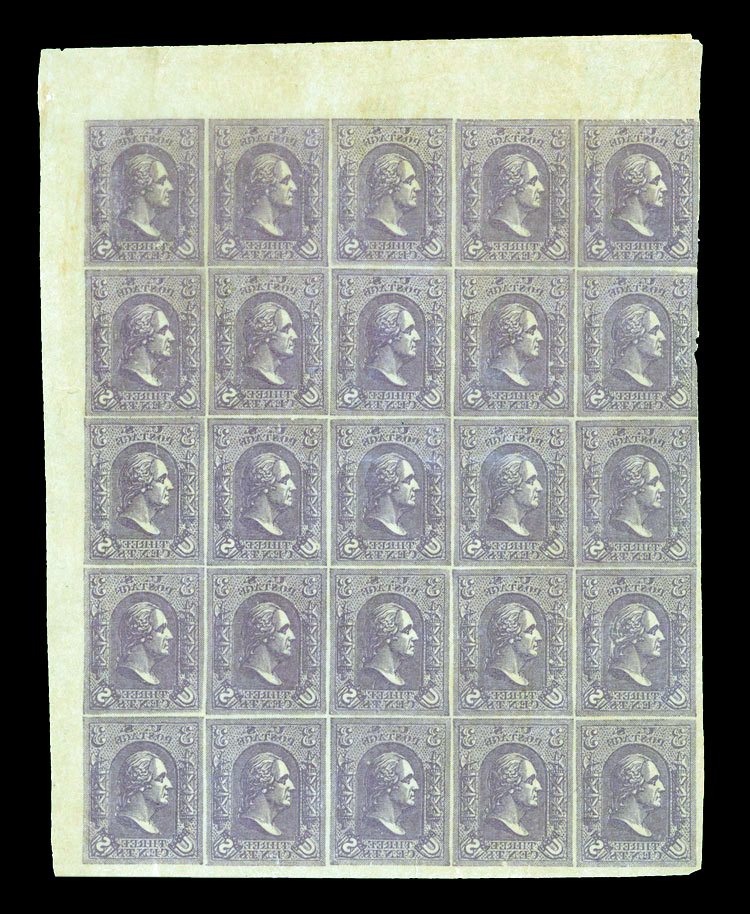
An imperforate block of 25 on onionskin paper
79-E8a
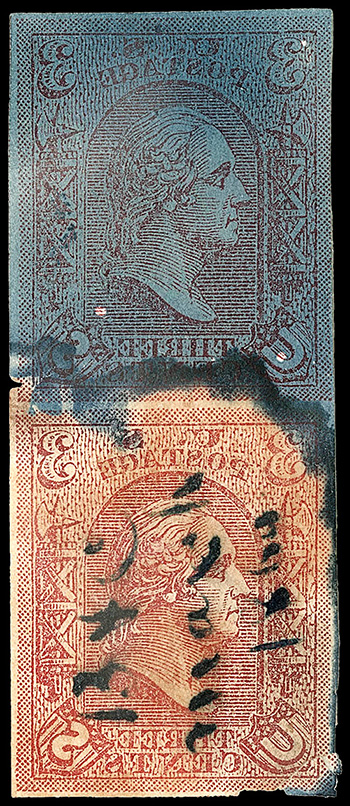
An illustration of the effect of contact with water
79-E8a
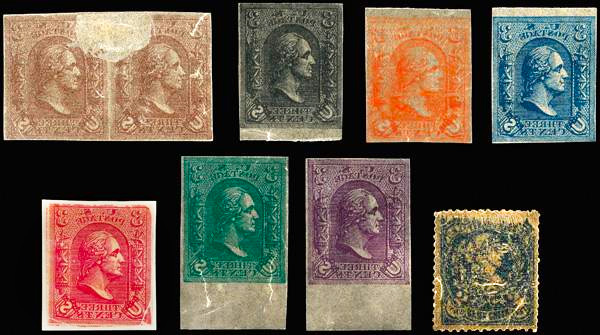
Some of the 27 colors of
79-E8
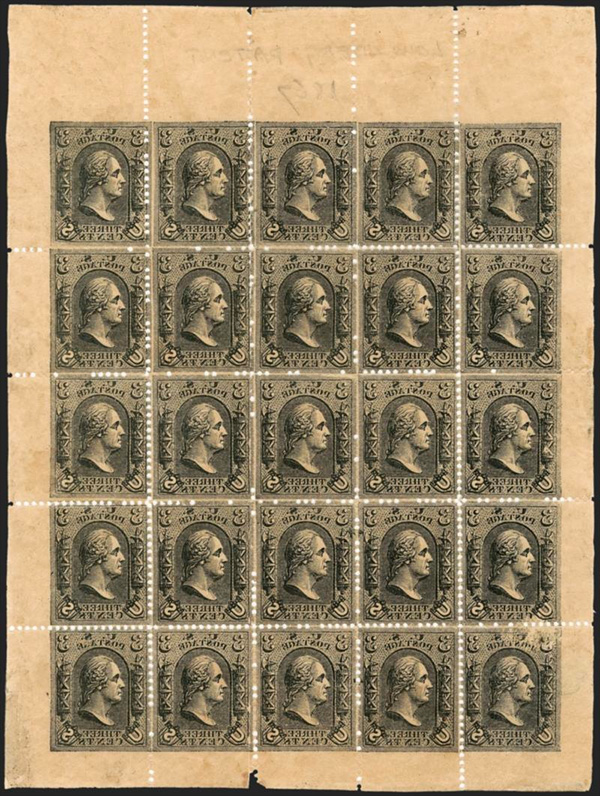
A perforated block of 25 on onionskin paper
79-E8b
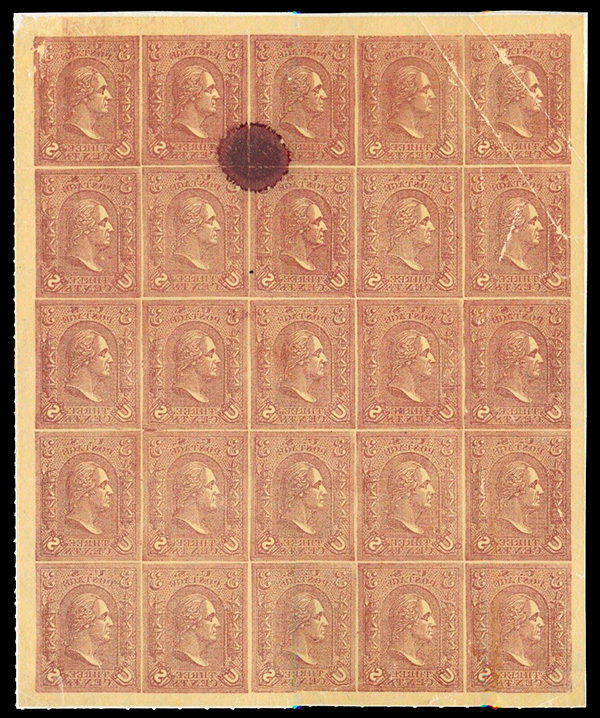
An imperforate block of 25 on opaque onionskin paper
79-E8c

Printed on the front of white wove paper
79-E9a
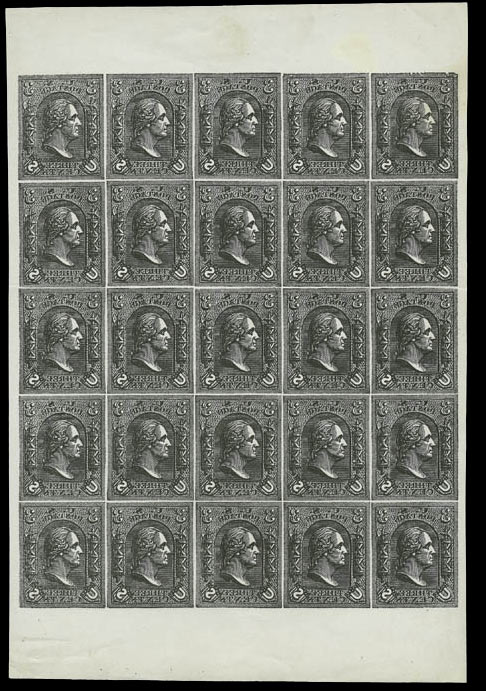
An imperforate block of 25 on clear white paper
79-E9b
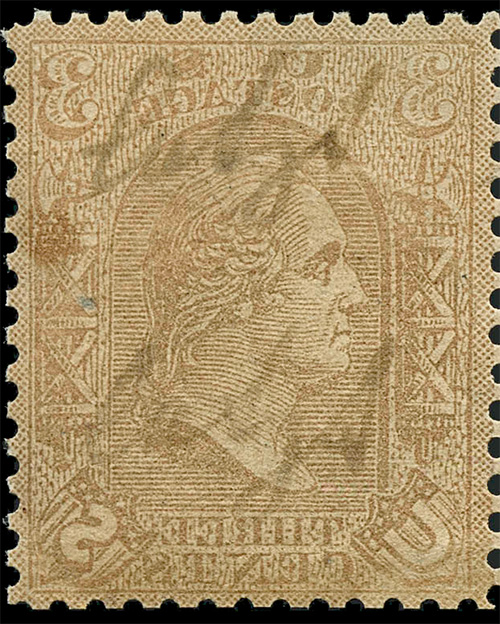
Fugitive ink on thick wove paper
79-E9c
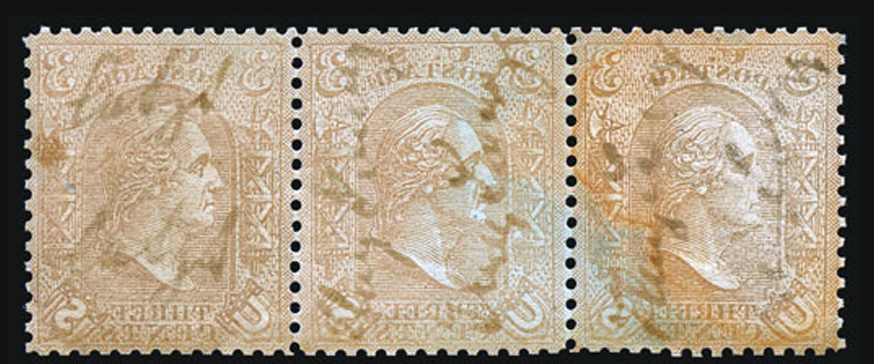
Strip of 3 of 79-E8c signed Henry Lowenberg
79-E9d
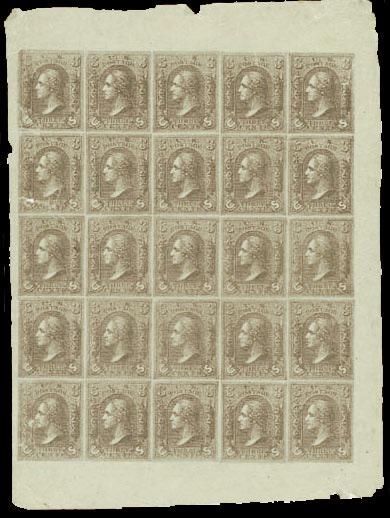
Imperforate plate of 25 on white chemically treated paper
79-E9e
1861 1¢ trial color proofs
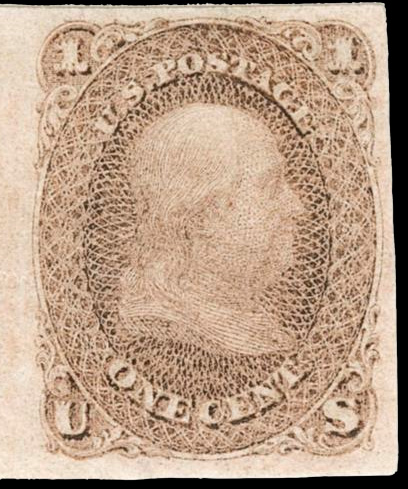
The 1¢ proof on starch coated paper
63TC5
A glycerin based ink printed on a glassine type coated paper impregnated with china white watercolor pigment. The 1¢ trial color proof comes in a muddy brown which is poorly printed . there are 17 different colors and some are shown below. The proofs ink easily flakes off and can be wiped off with water. These stamps were produced under a contract with the National Bank Note Company.
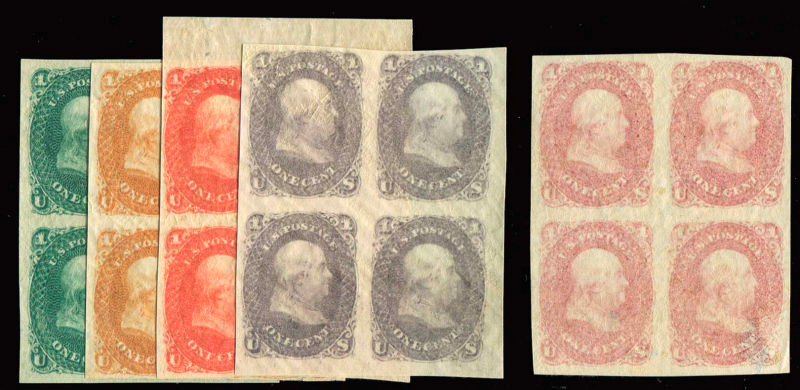
The essays on starch coated paper
63TC5

The National Bank Note Company printed all these 1851 Trial Color Proofs on plate 27

